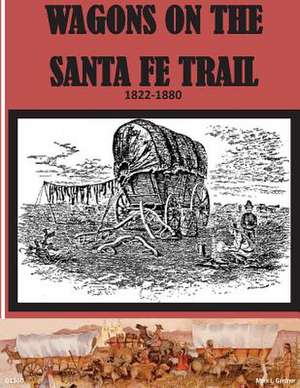Wagons on the Santa Fe Trail 1822 - 1880
Autor National Park Serviceen Limba Engleză Paperback
Preț: 104.74 lei
Nou
Puncte Express: 157
Preț estimativ în valută:
20.05€ • 20.87$ • 16.94£
20.05€ • 20.87$ • 16.94£
Carte disponibilă
Livrare economică 17 februarie-03 martie
Preluare comenzi: 021 569.72.76
Specificații
ISBN-13: 9781497529212
ISBN-10: 1497529212
Pagini: 146
Dimensiuni: 216 x 279 x 8 mm
Greutate: 0.35 kg
Editura: CREATESPACE
ISBN-10: 1497529212
Pagini: 146
Dimensiuni: 216 x 279 x 8 mm
Greutate: 0.35 kg
Editura: CREATESPACE
